Uranium-filled ‘buckyballs’ from Fukushima meltdowns may be bound for West Coast
By Michael Collins
High radiation readings in Santa Monica and Los Angeles during a recent 42-day period from late December and to late January strongly suggest that radiation from the multiple meltdowns in Fukushima Japan is spreading over Southern California.
This radiation, detected by this reporter and the U.S. Environmental Protection Agency separate from each other using difference procedures, does not appear to be natural in origin nor from radioactive fallout in rain.
Evidence points to a uranium-packed nanoscale sphere called a “buckyball” just detailed in a new study of Fukushima melted fuel and seawater. The fast-moving radioactive molecule could likely be what this reporter and the EPA have been detecting, having made its way across the Pacific in the 11 months since the meltdowns began.
Millions of tons of radioactive goo began forming when frantic efforts to cool the molten cores included spraying seawater into them, which further destroyed and corroded the stricken reactors. This unleashed even more lethal radiation into the ocean where the second strongest current in the world whisked it towards the West Coast and Southern California.
The question is, have the buckeyballs arrived and if so, how are they going to impact the coast and points further inland?
Since March 15, 2011, four days after the triple Fukushima Daiichi meltdowns in Japan, EnviroReporter.com has conducted over 1,500 radiation tests, many of which suggest that fallout in precipitation had the fingerprints of Fukushima.
Many of these tests have detected increasing amounts of alpha and beta radiation, which unlike gamma rays that pass through a person, are particles that can get into the body and radiate causing cancer.
High alpha and beta radiation air readings in this reporter’s Santa Monica radiation station December and January were detected at the same time as the U.S. Environmental Protection Agency was picking up on spikes in beta at its undisclosed Los Angeles sampling station.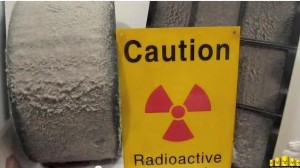
Our readings, about 538% of normal, were 22% higher on average per day than the previous period for air captured in our HEPA air cleaner filters.
Both sets of readings suggest radiation in excess of 5 times normal in areas of the Los Angeles Basin where we have concluded that no radon progeny is impacting the readings. Radon progeny are gaseous emissions of radiation from thorium and uranium occurring naturally in the earth. Radon daughters were not detected in half of the rain tested during this period that came in at background or less. In addition, we will show that radon has not historically been present in Santa Monica because of it geology and its proximity to the Pacific Ocean.
The spikes in alpha and beta radiation in HEPA filter dust after 42 days of use at Radiation Station – Santa Monica, shown in the videos A Whole HEPA Trouble #1 and A Whole HEPA Trouble #2, therefore are not attributable to radon progeny or background sources.
Likewise with the high EPA RadNet spikes which also were too frequent to be electronic interference with the secretive location’s signal. Its graph of beta spikes indicated that the corresponding rain events didn’t make much difference in the wildly fluctuating high readings.
This ionizing contamination wasn’t brought here by radioactive rain, sleet or snow, the most common type of fallout seen across North America since mid-March 2011. It is sea-borne goo making its way across the Pacific as Fukushima sits next to a Pacific current that rotates clockwise around the ocean past the West Coast.
The just-released study shows how the enormous amount of melted fuel at Fukushima is transforming itself into durable and fast-spreading radiation moving across the Pacific towards North America on this current.
The U.C. Davis investigation released last month looked at the impact of the millions of tons of fresh water and seawater poured onto the molten cores of the destroyed reactors. The conclusions were chilling.
Nanoparticle buckyballs form as the water comes into contact with the melted fuel, which is intensely radiated, turning the water into peroxide.
Buckeyballs are named after the American systems theorist and futurist Buckminster Fuller who invented the geodesic dome which the tiny particles resemble.
Though uranium isotopes are heavier than water, buckyballs are lighter because of their shape which is similar to a British Association football soccer ball. This structure makes radioactive uranium isotopes more mobile.
Buckyballs can hold 60 uranyl ions in these spheres that exhibit high mobility in water. This is bad news because of its ability to spread Fukushima ocean contamination to Pacific Rim countries quickly. Equally troubling is that the study found that buckeyballs hadn’t decreased in ionization intensity after 294 days.
These hot nanoparticles, virtually indestructible, radiate and are a threat to anyone who inadvertently breathes them in where the buckyballs could induce lung cancer. Swallowing U60 buckyballs could also increase the chance of contracting cancer from its relentless radiation that is a so-called “bone seeker” that also targets the blood.
The fuel to ferment production of these cancer-inducing buckyballs is plentiful.
The three melted down Fukushima reactors, along with a fourth with a spent fuel pond precariously hanging out the side of a building, have over 2,381 tons of highly radioactive fuel. Over half of that fuel is in the spent fuel pond and is so radioactive that if Unit 4 collapses, which experts predict it will do, the contamination disaster will so intense that vast areas of Japan’s eastern coast could be destroyed.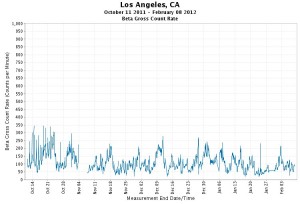
High levels of radiation recently experienced in Southern California air, as picked up by Radiation Station – Santa Monica and the U.S. Environmental Protection Agency in Los Angeles, showed significant spikes in radiation during the month of January. Both stations registered over 5.3 times normal though the methods of sampling and detection differed. Our sampling and testing allowed for the detection of alpha and beta radiation while the sensitive EPA instrument detected beta only according to an EPA website.
Both stations are water proof therefore weren’t affected by the scant rain that fell during the month which wasn’t that particularly radioactive. Something else had to be at play, especially if the detections weren’t the result of natural radon daughters.
A strong contender for the transportation and deposition of these alpha and beta isotopes is the most unlikely of toxic suspects – sea spray. Radioactive sea spray has been shown to blow kilometers inland in the United Kingdom along the Irish Sea. Cesium, plutonium and other nuclear fission radionuclides have been found blown 100 kilometers from the shore into Wales and Cumbria as we will further explore.
Presently, the U.S. EPA and the National Oceanic and Atmospheric Administration have told EnviroReporter.com that they do not test for Fukushima meltdowns-related radiation. Both organizations referred this reporter to each other for information on Pacific Ocean testing that presently does not exist despite government officials’ comments to the contrary.
The problem is real, however, a Pandora’s Box of pain and suffering that only the most lethal forms of radiation can cause. And it’s the worst at the seashore where millions of people play and millionaires live in properties adjacent to an increasingly hot sea.
It’s not surprising that there is no attention paid to this increasing radiation. Public lack of awareness of Fukushima contamination in America and Canada is compounded by government proclamations that everything is perfectly fine. The unquestioning public and a silent media, for the most part, are content to buy it.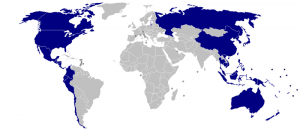
The radiation detections and an 11-month EnviroReporter.com investigation say otherwise. The implications for the 44 nations of the Pacific Rim are grim, nowhere more so than sunny Southern California where the beach culture was invented and grew to the strains of the Beach Boys beginning 50 years ago.
The implications of this discovery is as vast as the ocean and as huge as the amounts of radiation pouring out of the runaway reactors. The greatest poisoning of the largest body of water on the face of the Earth will determine the lives of billions of people. Generations to come will be affected by what people and governments do now in the face of Fukushima.
JAPAN SYNDROME
The March 11, 2011 Great East Japan Earthquake was a magnitude 9.0 temblor on the Richter Scale and centered at an underwater depth of 20 miles about 43 miles east of the Oshika Peninsula of Tōhoku. It was the most powerful earthquake to have ever to impacted Japan.
The shaker sent waves up to 133 feet high slamming into Japan destroying or damaging over 125,000 buildings in the island nation. The Japanese National Police Agency said that at least 19,166 people were killed or remain missing with over 6,000 injured.
The World Bank has estimated the damage from the earthquake and tsunami to cost $235 billion which would make it the single most costly natural disaster in the history of the world.
Soon after the earthquake, a monstrous series of waves, some as high as 40 feet, smashed into the Fukushima Daiichi nuclear power plant complex made up of six reactors along the coast, three of which were operating at full capacity.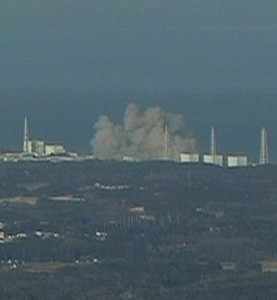
Shaking and wave destruction cut the complex off from the power grid sending reactors Units 1, 2 and 3 into total meltdown. Two of the reactors were blown apart by hydrogen explosions.
Unit 4, while de-fueled, also blew apart and is leaning precariously with the plant’s spent fuel pod, far more radioactive and concentrated than active fuel rods in a reactor, hanging out in the air threatening to crash to the ground.
Numerous experts from Japan and the United States contend that if this happens eastern Japan and possibly even Tokyo will become too radioactive to be inhabitable.
The Japanese government and TEPCO, the company that owns the Fukushima Daiichi, aren’t even sure what condition the fully melted reactor cores are in. The corium goo seems to have breached the reactor core and containment yet no one knows precisely where it is.
Regardless, technology doesn’t exist that would be able to retrieve the melted fuel which is burning its way out of the reactor buildings.
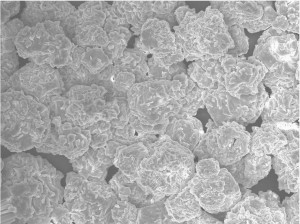












Nuclear power is stupid anyway, but how much stupider to have a nuclear plant on a coast, where earthquakes happen frequently, and then not do jack about it for a YEAR when it blows up due to someone’s incompetence.
Another informative article Michael that inspired me to research further. Please check out the National Library of Medicine’s ‘Toxnet’ pages regarding Uranium Peroxide (UP) and it’s progress after inhalation or ingestion. The article describes it’s solubility, primary effect on gut-mucosa-lung tissues, increased effect on people with acidic urine, emergency treatment for exposure, how people get exposed, etc. (UP) is a known carcinogen that readily targets the kidneys. Not mentioned however is the effect of uranium peroxide in buckyball form or how it might degrade depending on various other isotopes present (mentioned in your ‘Endless Bummer’ article). Take this for what it’s worth, after all, we are in uncharted territories now.
http://toxnet.nlm.nih.gov/cgi-bin/sis/search/r?dbs+hsdb:@term+@rn+19525-15-6
I was looking for info on radiation from Japan and its connection to lung cancer and found your excellent article. The reason I was looking for the connection was that I recently found out that a relative of mine (by marriage) just discovered he has lung cancer that has spread to his liver. He lives in Washington state. He had become ill last spring and at that time, the doctors told him it must be tuberculosis. Now, a year later, they tell him, Oh, we were wrong about TB; this is cancer. Hmmmm. All this time, they could have been using alternative methods of curing cancer if they had been aware that radiation from Japan could have caused it in the first place. They must not have even suspected that his problem could be cancer. If only the officials had let people know of the very real dangers of fallout, this man could maybe have protected himself.
@Chase: Funny you should write this because, following, is another comment on another forum that also looks at ‘cute’ terminology (though, do note Chase, I did not come up with using “buckyballs” as that word has been around long before Fukushima):
@Lennie: I sure hope some of that goo in and around the debris gets rad tested.
@Potrblog: Thank you again for your excellent observations, sampling, testing and useful and possibly lifesaving warnings like this one.
@Margery Brown: Comments like yours keep the (buckyball-free, hopefully) wind in our sails. Thank you.
Buckyballs… sounds cute.
Maybe, if we come up with ‘cute’ names for this kind of stuff people won’t freak out as much. Maybe they’ll listen?
Maybe we could call the other contaminated ocean goo ‘Muckymuck’.
Sounds like something one might order at a fancy restaurant. I’ll have an order of Buckyballs and a side of Muckymuck. Mmmm….
Seriously, most of us know this is just the beginning in the big (long term) scheme of this man made monstrous tragedy. There will be many new descriptors for this crap. But, will the ‘masses’ understand or care? Will the human race still be here in 200 years? I guess that’s just one of the questions at this time.
I hope we learn from this, I pray we can correct it somehow.
Avoid the rain!
Love,
Chase
Jeff Rense Interview with Michael Collins
February 27, 2012: Full-hour show where many topics are covered as one year anniversary of Fukushima meltdowns approaches. Collins describes, drawing on his years as an investigative reporter and journalism judge, how the government and some mainstream media obscure and diffuse danger presented by world’s worst single environmental disaster even as new evidence shows that Los Angeles had the largest cesium-137 deposition after the meltdowns began March 11, 2011.
A family member saw debris on the shore in Oregon above Brookings Harbor, while driving south on the 101 Oregon Coast Highway. He believes it was from Japan. He said that growing up in Oregon he would periodically see things wash ashore from Japan due to how the ocean current flows.
Thanks for sharing your work! I only wish more would listen and learn! I am not surprised to see your findings, but was hoping beyond hope that just maybe it would not get this bad. As usual, shame on lame-stream media!
Has anyone on KPFK interviewed you Michael? Please try sending an audio tape to “Roy of Hollywood” with a note and he might play it, and certainly should.
I will write a piece for the Venice Beachhead and have good reason to believe it will be published.
The Unurban cafe’ is the political cultural hangout of choice, and a great place to connect with people.
You must know all of that, and I must add, I have learned more than I knew from you, can I have shared so far. Decontamination is a priority, especially for my grandchildren. Anything on that?
Bill Mitchell
Great work tonight on Rense. I didn’t hear it all, but caught most of your comments.
We have been fighting the good fight there a long time. In my opinion the best documentation on the web of the events in Japan and the world. Arnie says he likes it. *;-)
Take care,
SP
Michael….This is an amazing and incredible article you have written, and, needless to say,it is terribly frightening! It is absolutely shameful and unbelievable that EPA has packed up a lot of their equipment and announced that everything is o.k….no harm no foul.
We are all just so very lucky to have you, Potrblog and the others who have been contributing to this website!!! You may very well be the only folks standing between all of us and and the “gift” from Fukishima….the one that keeps on giving.
And, most wonderful of all, Michael, is your ability to write (understandably)about the science of what is happening to all of us. I predict that it will all make first a book, and then an Academy-award movie some day. Please keep your HEPA filter going 24-7.
Well done Michael – a fine piece, very fine, with lots of important information and dates.
Most people get angry at me when I mention the R word (radiation). I’m going to send them this piece to brighten up their day.
QChad, I would think about hiking for awhile, or something else. It’s better than risking your very precious life. I know it is a loss, and maybe you can get hooked on another release and spiritual path. All of life is changing in every area, and we are all going to have to make adjustments, even beyond the fallout problems.
well, considering the boat is my only home i almost wish i did not read this
feel like nothing can be done
no one will even speak about it
the biggest question:
do i stop surfing – the only spiritual getaway i have in life!
Very good reporting on this. Thank you!
Another well written powerful expose from MC. This is THE bad bad accident you drive by and better look @.
READ the LA Weekly news feature What’s in Pepper Spray? In California, the toxin TCE
Hi Lady!!! Good to hear from you. Our webmaster 😉 has fixed the problem. Hugs!
Excellent. Thank you once again Michael for your comprehensive and informative work.
Very good work, just one problem…Your paypal button is not working…
Things don’t get no better, they just keep on getting worse.
Many thanks for providing this is very important information. Guess I am going to have to get serious about moving off of the CA coast. I live less than a mile from the Pacific Ocean. This information makes me believe that my HEPA filters, washing my vegetables in bentonite clay and other measures are not nearly enough protection.
Really great information that should encourage others to find out more about what is really happening on the West Coast of the USA…
I suggest you provide a button or link for:
1. Folks to help you collect data in different locations!
2. Folks that want to learn how to collect data.
3. Folks that want to share a detector but cannot afford to “own” one.
Sixteen blocks from the beach is where I live. This puts a new light on coastal living. I haven’t walked the beach in months, mainly after March 11. I am assuming the Inspector won’t be strong enough to measure the buckeye balls? Time is coming where wearing respirators may be the norm. But not after many are convinced of the associated death rates.
Excellent article. Informative, with far-reaching implications. An insidious tide of radioactive pollution is threatening the coastal areas of North America. I won’t be able to visit the beach areas of Southern California without thinking about this new risk. Thank you, Michael, for your excellent research, and bringing this to our attention.